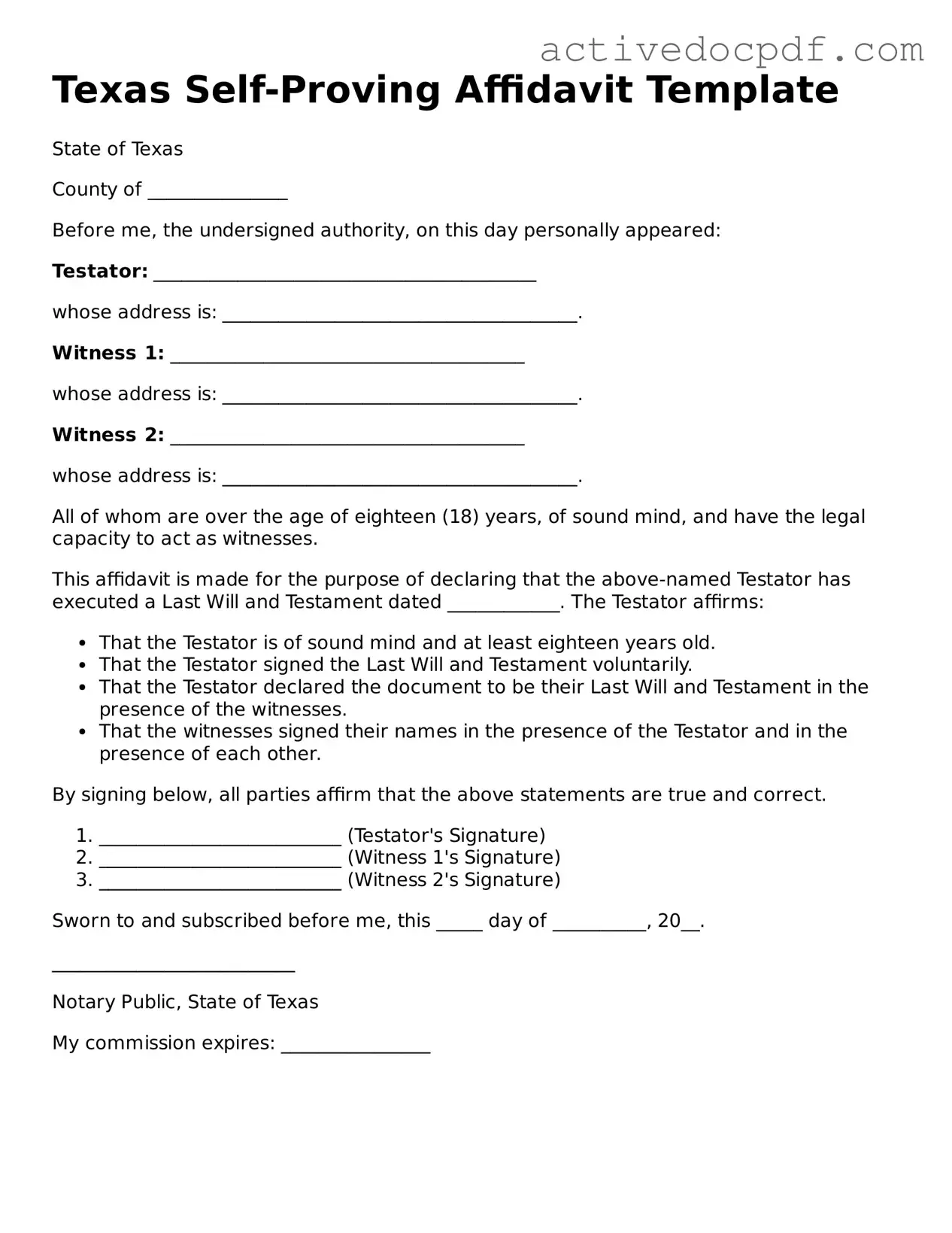What is a Texas Self-Proving Affidavit?
A Texas Self-Proving Affidavit is a legal document that allows a will to be validated without the need for witnesses to testify in court. This affidavit is typically signed at the same time as the will, making the process of proving the will simpler and faster for the executor.
Who can sign a Self-Proving Affidavit?
The testator (the person creating the will) and at least two witnesses must sign the Self-Proving Affidavit. All parties must be present at the same time when signing the document. It’s important that the witnesses are not beneficiaries of the will to avoid any conflicts of interest.
Why should I use a Self-Proving Affidavit?
Using a Self-Proving Affidavit can save time and reduce complications during the probate process. It eliminates the need to locate witnesses after the testator's death, which can be difficult. This can lead to a smoother transition of assets and help avoid potential disputes among heirs.
How do I create a Self-Proving Affidavit?
To create a Self-Proving Affidavit, follow these steps:
-
Draft the affidavit, including the necessary details about the testator and the witnesses.
-
Ensure that all parties understand the document and its implications.
-
Have the testator and witnesses sign the affidavit in front of a notary public.
Make sure to keep the signed affidavit with the original will for easy access during probate.
Can I add a Self-Proving Affidavit to an existing will?
Yes, you can add a Self-Proving Affidavit to an existing will, but it must be done correctly. The affidavit should be signed by the testator and the witnesses in the presence of a notary. It is advisable to consult with a legal professional to ensure that the addition is valid and properly executed.
Is a Self-Proving Affidavit required in Texas?
No, a Self-Proving Affidavit is not required in Texas. However, it is highly recommended because it simplifies the probate process. Without it, witnesses may need to be located and brought to court to testify, which can delay the proceedings.
What happens if a Self-Proving Affidavit is not included with the will?
If a Self-Proving Affidavit is not included, the will can still be probated, but the process may take longer. Witnesses will need to be located, and their testimonies may be required to validate the will. This can lead to additional stress and complications for the executor and beneficiaries.
Can a Self-Proving Affidavit be revoked?
A Self-Proving Affidavit can be revoked if the will it accompanies is revoked. This can happen if the testator creates a new will or explicitly states that the previous will is no longer valid. Always keep legal documents updated to reflect current wishes.
Where should I store my Self-Proving Affidavit?
Store your Self-Proving Affidavit with your original will in a safe and secure location. Consider using a fireproof safe or a safety deposit box. Inform your executor and trusted family members about where these documents are kept to ensure they can be accessed when needed.
